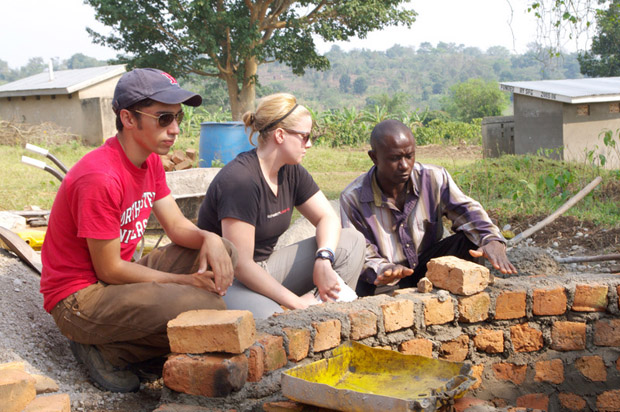'Bringing water to your doorstep'

Northeastern University student-researchers have designed a shovel-ready drinking water system that has the potential to produce 100,000 liters of potable water per day for more than 1,100 villagers in Bbanda, Uganda.
Civil engineering students designed the water system for a senior capstone project. Northeastern’s student chapter of Engineers Without Borders, which has brought clean water to families in Bbanda and El Carrizalito, Honduras, raised $2,500 through Northeastern’s Catalyst program to fund travel for two students to Bbanda and plans to implement the design later this year.
Ferdi Hellweger, an environmental engineering associate professor who served as the capstone project’s faculty adviser, said Bbanda villagers must now carry dirty water for miles just to meet their basic needs, which often prevents students from attending school.
“We’re essentially bringing water to their doorstep,” said Hellweger, who was recently honored by the New England Region of the Environmental Protection Agency for working to make the Charles River swimmable. “The system will significantly affect the quality of life and health of this village.”
Capstone students designed the mechanisms for pumping, storing and distributing groundwater in AutoCAD, a software application for computer-aided drafting, and WaterGEMS, a hydraulic modeling application for pipe networks. They conducted many computational analyses, the most complex of which were aimed toward approximating groundwater flow and modeling a diesel generator, which will power the entire drinking water system.
Mike Sanders, E’09, a former EWB team member who currently works for an engineering consulting firm called Kleinfelder, served as the students’ technical adviser.
Keith Nelson, E’12, who has twice visited Bbanda, praised the experiential-learning opportunity, which he called a “rigorous project in terms of technical detail.”
“We had to figure out how to get the pump to communicate with the tank and how the valves interface with everything else,” he explained. “It gave us a chance to figure out how to actually put everything together and get it to do what we wanted it to do.”
Nelson attended weekly meetings of Northeastern’s chapter of EWB to keep members informed of the project’s progress and encouraged newcomers to meet with the capstone group.
“It was a great opportunity for us to pass on what we were learning,” he said.
Hellweger agreed with Nelson’s assessment of the project’s value. “We brought together everything the students have learned over the last five years,” he said, in reference to courses in which students created progress reports, conducted hydrology assessments and calculated water pressure coming out of pipes. “In this class, we solved a real-world problem.”